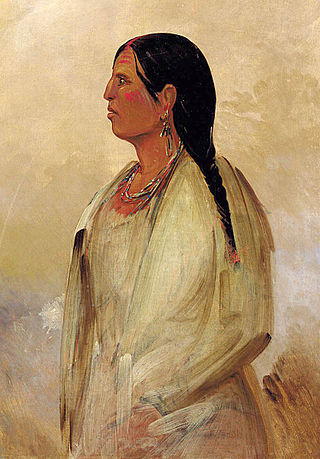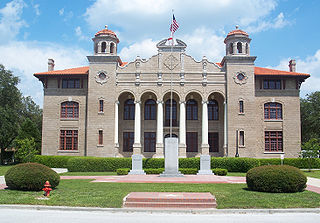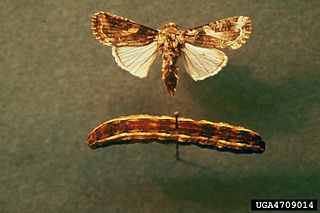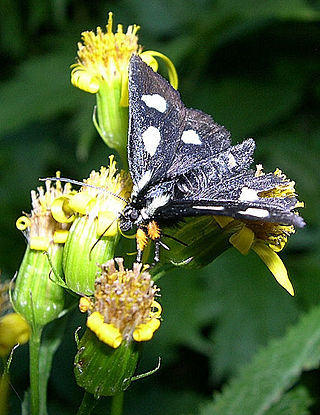
Entomology is the scientific study of insects, a branch of zoology. In the past the term insect was less specific, and historically the definition of entomology would also include the study of animals in other arthropod groups, such as arachnids, myriapods, and crustaceans. This wider meaning may still be encountered in informal use.

The East Coast of the United States, also known as the Eastern Seaboard, the Atlantic Coast, and the Atlantic Seaboard, is the region encompassing the coastline where the Eastern United States meets the Atlantic Ocean.

William Bartram was an American botanist, ornithologist, natural historian and explorer. Bartram was the author of an acclaimed book, now known by the shortened title Bartram's Travels, which chronicled his explorations of the southern British colonies in North America from 1773 to 1777. Bartram has been described as "the first naturalist who penetrated the dense tropical forests of Florida".

The Southeastern United States, also referred to as the American Southeast, the Southeast, or the South, is a geographical region of the United States located in the eastern portion of the Southern United States and the southern portion of the Eastern United States. The region includes a core of states that reaches north to Maryland and West Virginia, bordering the Ohio River and Mason–Dixon line, and stretches west to Arkansas and Louisiana.

The Southern Railway was a class 1 railroad based in the Southern United States between 1894 and 1982, when it merged with the Norfolk and Western Railway (N&W) to form the Norfolk Southern Railway. The railroad was the product of nearly 150 predecessor lines that were combined, reorganized and recombined beginning in the 1830s, formally becoming the Southern Railway in 1894.

Indigenous peoples of the Southeastern Woodlands, Southeastern cultures, or Southeast Indians are an ethnographic classification for Native Americans who have traditionally inhabited the area now part of the Southeastern United States and the northeastern border of Mexico, that share common cultural traits. This classification is a part of the Eastern Woodlands. The concept of a southeastern cultural region was developed by anthropologists, beginning with Otis Mason and Franz Boas in 1887. The boundaries of the region are defined more by shared cultural traits than by geographic distinctions. Because the cultures gradually instead of abruptly shift into Plains, Prairie, or Northeastern Woodlands cultures, scholars do not always agree on the exact limits of the Southeastern Woodland culture region. Shawnee, Powhatan, Waco, Tawakoni, Tonkawa, Karankawa, Quapaw, and Mosopelea are usually seen as marginally southeastern and their traditional lands represent the borders of the cultural region.

Augustus Radcliffe Grote was a British entomologist who described over 1,000 species of butterflies and moths. He is best known for his work on North American Noctuidae. A number of species were named after him, including the moth Horama grotei.
Comachara is a monotypic moth genus in the family Noctuidae. Its single species, Comachara cadburyi, or Cadbury's lichen moth, is found in eastern North America, including Alabama, Florida, Georgia, Kentucky, Maryland, New Jersey, New York, North Carolina, Ohio, Pennsylvania, South Carolina, Tennessee, Texas and West Virginia. Both the genus and species were first described by John G. Franclemont in 1939.
William Augustus Edwards, also known as William A. Edwards was an Atlanta-based American architect renowned for the educational buildings, courthouses and other public and private buildings that he designed in Florida, Georgia and his native South Carolina. More than 25 of his works have been listed on the National Register of Historic Places.

The Sumter County Courthouse, built in 1912–1914, is an historic courthouse building located in Bushnell, Florida. The total costs of construction for the courthouse were $56,000. It was designed by Atlanta-based architect William Augustus Edwards who designed one other courthouse in Florida, two in Georgia and nine in South Carolina as well as academic buildings at 12 institutions in Florida, Georgia and South Carolina. He designed most of the original buildings on the campus of the University of Florida in Gainesville. In 1989, The Sumter County Courthouse was listed in A Guide to Florida's Historic Architecture, published by the University of Florida Press.

Frank Pierce Milburn was a prolific American architect of the late 19th and early 20th centuries. His practice was primarily focused on public buildings, particularly courthouses and legislative buildings, although he also designed railroad stations, commercial buildings, schools and residences. Milburn was a native of Bowling Green, Kentucky who practiced as an architect in Louisville from 1884 to 1889; Kenova, West Virginia 1890–1895; Charlotte, North Carolina; Columbia, South Carolina; and Washington, D.C. after 1904. From 1902 Milburn was architect for the Southern Railway.

Alypia is a genus of moths in the family Noctuidae.

Alypia octomaculata, the eight-spotted forester, is a moth of the family Noctuidae first described by Johan Christian Fabricius in 1775. It is native to Canada, but can be found today throughout Northern America, ranging between Nova Scotia to Florida and South Dakota to Texas. Their habitats being rather specific, they make home where wooded areas meet open fields.

Spodoptera ornithogalli is a moth of the family Noctuidae.

Alypia langtoni, the six-spotted forester or Langton's forester, is a moth of the family Noctuidae. The species was first described by William Couper in 1865. It is found in North America from Newfoundland to Alaska, south to Maine and Wisconsin in the east, south in the west to Colorado and California.

Alypia ridingsii, the mountain forester or Ridings' forester, is a moth of the family Noctuidae. The species was first described by Augustus Radcliffe Grote in 1864. It is found in North America as far east as the eastern edge of the Rocky Mountains in Colorado. It is also found in Arizona, Utah, all of California and northward into Oregon, Idaho, Washington, British Columbia and Alaska

Alypia mariposa, the mariposa forester, is a moth of the family Noctuidae. The species was first described by Augustus Radcliffe Grote and Coleman Townsend Robinson in 1868. It is found in Coast Ranges and Sierra foothills of California, from Kern and San Luis Obispo counties in the south to Placer County in the north.

Callopistria floridensis, the Florida fern moth or Florida fern caterpillar, is a moth of the family Noctuidae. It is found from North America, south through the Caribbean, Mexico and Central America to Ecuador.
Calosima dianella, the eastern pine catkin borer, is a moth in the family Blastobasidae. It is found in the United States, including Florida, Georgia, South Carolina and Tennessee.
The following television stations operate on virtual channel 43 in the United States:
















